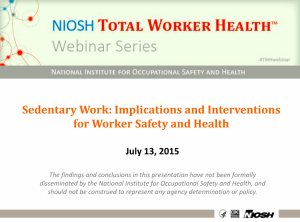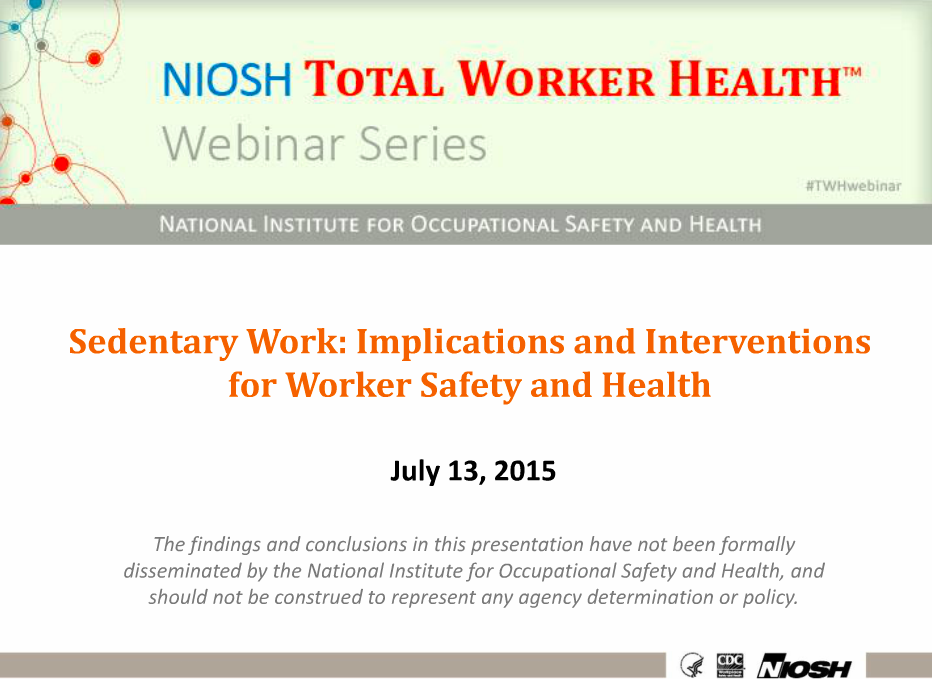Transparency is extremely important to us, so we are letting you know that we may receive a commission on some of links you click on from this page. See our disclaimer.
 We've reported frequently on the dangers of too much sitting and the importance of integrating movement into the workday (and even the stay at home day!). Post-Thanksgiving, the issue might seem even more relevant.
We've reported frequently on the dangers of too much sitting and the importance of integrating movement into the workday (and even the stay at home day!). Post-Thanksgiving, the issue might seem even more relevant.
However, clearly there are some jobs where getting up, leaving the desk, and moving around are difficult, if not impossible.
Indeed, Dr. L. Casey Chosewood, Director of CDC’s National Institute for Occupational Safety and Health (NIOSH) Office for Total Worker Health, recently addressed steps an organization can take to improve the safety and health of its workers, stating: “In general, offer greater flexibility wherever possible. Offering workers control over how and when work is performed may help prevent and manage job-related stress. The more flexibility that can be built into work design, work flow and schedules, the better individual and organizational health outcomes are likely to be.”
“Aligning communication between senior leaders and the rest of the organization is also a key consideration. An integrated focus on safety and health can’t stop at the boardroom, the safety office or the employee health clinic; it must permeate throughout the organization in a coordinated way. Frontline supervisors are a critical part of the puzzle. They must understand the link between work, other risks and safety and health outcomes. This approach requires an investment in training and mentoring to optimize the well-being of all employees.”
To this point, the CDC's National Institute for Occupational Safety and Health (NIOSH) recently asked some important questions:
- What impacts might sedentary work have on injury risk?
- What impacts does it have on chronic disease?
- What are some options for addressing physical inactivity at work, and how might the effectiveness of these options vary?
- What factors influence how likely someone might be to use interventions for sedentary work?
To address these questions and more, NIOSH brought together a series of experts for an excellent webinar.




0 Comments